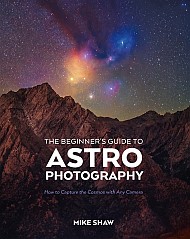Astronomy
Webb Spots the 'Smoke' from Crashing Exocomets Around a Nearby Star
The James Webb Space Telescope (JWST) was involved in yet another first discovery recently available in pre-print form on arXiv from Cicero Lu at the Gemini Observatory and his co-authors. This time, humanity’s most advanced space telescope found UV-fluorescent carbon monoxide in a protoplanetary debris disc for the first time ever. It also discovered some features of that disc that have considerable implications for planetary formation theory.
How lab-grown lichen could help us to build habitations on Mars
How lab-grown lichen could help us to build habitations on Mars
Spectacular Cosmic Collision Captured in New Hubble Image
NASA’s Hubble Space Telescope captured asteroids crashing into one another in a nearby planetary system around a star some 25 light-years away
10 Transformational Health Discoveries of 2025
From advancements in male birth control to the science of supplements, Scientific American highlights some of the most fascinating health and medicine stories of 2025
Gene therapy for Huntington’s disease showed great promise in 2025
Gene therapy for Huntington’s disease showed great promise in 2025
Europa's thick ice may hinder the search for life in its oceans
Europa's thick ice may hinder the search for life in its oceans
IVF success may depend on how long men abstain from ejaculation
IVF success may depend on how long men abstain from ejaculation
Russia's Plans for a Space Station Includes "Recycling" its ISS Modules
Oleg Orlov, Director of the Institute of Biomedical Problems at the Russian Academy of Sciences (RAS), announced that the Russian Orbital Station (ROS) will include the modules that make up the Russian Orbital Segment of ISS.
Ancient Romans Guarding Hadrian’s Wall Were Riddled with Worms and Parasites
Romans living in ancient Britain were plagued by intestinal parasites, all of which are spread by fecal contamination
Trump Administration Targets Offshore Wind Farms, Citing National Security Concerns
The U.S. Department of the Interior announced it would “pause” leases for five large offshore wind farms, imperiling the fast-growing clean energy industry
Explore Orion's Massive New Stars with Binoculars
Waves of recent star formation have made Orion winter's most scintillating constellation. You can see how it all came to be.
The post Explore Orion's Massive New Stars with Binoculars appeared first on Sky & Telescope.
New Scientist changed the UK's freedom of information laws in 2025
New Scientist changed the UK's freedom of information laws in 2025
The Solar System Loses an Ocean World
Saturn’s largest moon, Titan, may not have a subsurface ocean after all. That’s according to a re-examination of data captured by NASA’s Cassini mission, which flew by Titan dozens of times starting in 2004. By 2008, all the evidence suggested a subsurface ocean of liquid water waited beneath Titan’s geologically complex crust. But the latest analysis says the interior is more likely to be made of ice and slush, albeit with pockets of warm water that cycle from core to surface.


